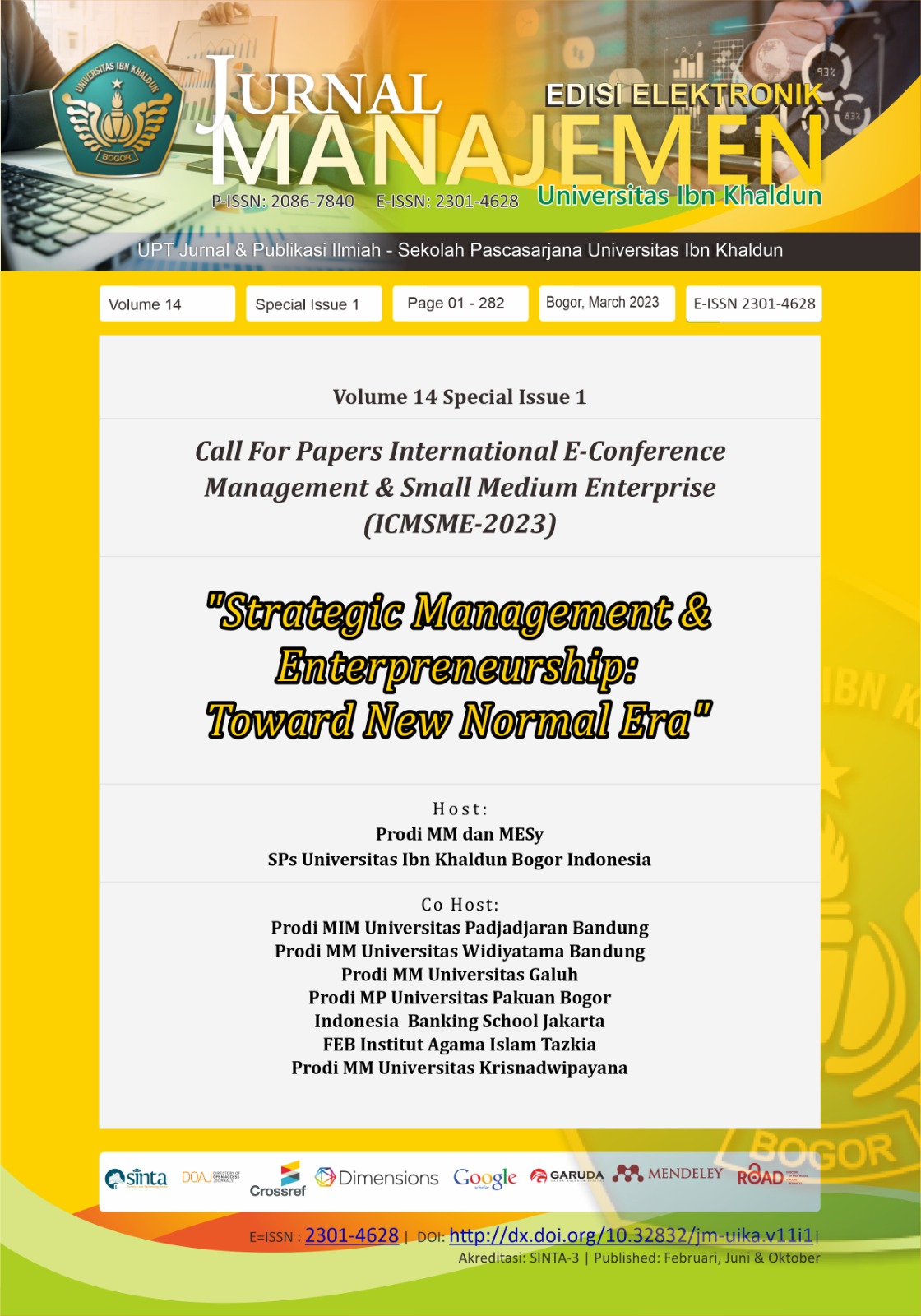Customers' Preference of Online Marketplace: Trendyol and Hepsiburada Case Study
DOI:
https://doi.org/10.32832/jm-uika.v14i1.9793Keywords:
Online Marketplace, Neuromarketing, Customer PreferenceAbstract
The development of internet has increased the popularity of e-commerce. There are many different types of online marketplace, and each of them has its own customer base. Customers develop their preference or choice of specific online marketplace over the competitors. This research aimed to understand the factors influencing the choice. The research explored online dimensions that influencing user experience during shopping. In addition, the research incorporates neuroscientific findings, namely limbic types which is essentially similar to customer persona. Analysis of customer persona of the limbic type used descriptive analysis and dimension of attitude online shopping used regression analysis that done with SPSS application. The object of research was the online shopper with marketplace Trendyol and Hepsi Burada. The sampling technique was purposive with the criteria of responden is online shoppers. The collection of data by google form used snowballing technique. The total respondents were 117. The results showed that Trendyol type of limbic types ware Connoisseurs and Hedonist. The limbic map of Trendyol was Fantasy/Pleasure towards Balance System. The dimensions of brand identity that give significant effect were interactivity, information quality, usability, entertainment and personalization. Interactivity, usability and entertainment gave a positive and significant effect towards brand attitude formation in E-shops Trendyol or Hepsiburada, whereas information quality and personalization resulted on signicantly negative impact. Design and domain name had no significant effect towards dependent variable. The model could explain 79.2% of brand attitude formation in E-shops Trendyol or HepsiburadaReferences
Ecommerce - turkey: Statista market forecast. (2021). Retrieved November 1, 2022, from https://www.statista.com/outlook/dmo/ecommerce/turkey
Etailize. (2021, September 21). How to choose the right marketplace. Retrieved November 1, 2022, from https://e-tailize.com/blog/how-to-choose-the-right-marketplace/
Felix, C., 2008. Neuromarketing - Ein innovativer Ansatz zur Erklärung des Konsumentenverhaltens unter Berücksichtigung der Wirkung von Marken. Hamburg: Diplomica® Verlag GmbH.
Häusel, H.-G., 2016. Brain View - Warum Kunden kaufen. 4. ed. Freiburg: Haufe Mediengruppe.
ILYAS, G. B., RAHMI, S., TAMSAH, H., MUNIR, A. R., & PUTRA, A. H. (2020). Reflective model of brand awareness on repurchase intention and customer satisfaction. The Journal of Asian Finance, Economics and Business, 7(9), 427-438. doi:10.13106/jafeb.2020.vol7.no9.427
Kollmann, T., & Suckow, C. (2012). Influencing user attitudes by managing online brand communication in E-Shops. Marketing ZFP, 34(1), 40-54. doi:10.15358/0344-1369-2012-1-40
í–ztürk, S. (2021, September 17). Status of e-commerce in Turkey. Retrieved November 1, 2022, from https://d-help.com/en/status-of-e-commerce-in-turkey/
Raab, G., Gernsheimer, O. & Schindler, M., 2009. Neuromarketing: Grundlagen – Erkenntnisse – Anwendungen. 2. ed. Wiesbaden: Gabler Research.
Scheier, C. & Held, D., 2012. Wie Werbung wirkt: Erkenntnisse des Neuromarketing. 2. ed. Freiburg: Haufe Mediengruppe.
Sugiyono. (2013). Metode Penelitian Kuantitatif, Kualitatif dan Tindakan. Bandung: Alfabeta.
Top websites ranking for Ecommerce & shopping in Turkey - similarweb. (2022). Retrieved November 1, 2022, from https://www.similarweb.com/top-websites/turkey/category/e-commerce-and-shopping/
Downloads
Published
How to Cite
Issue
Section
License
Authors who publish with this journal agree to the following terms:
- Authors retain copyright and grant the journal right of first publication with the work simultaneously licensed under a Creative Commons Attribution-NonCommercial-ShareAlike 4.0 International License that allows others to share the work with an acknowledgement of the work's authorship and initial publication in this journal.
- Authors can enter into separate, additional contractual arrangements for the non-exclusive distribution of the journal's published version of the work (e.g., post it to an institutional repository or publish it in a book), with an acknowledgement of its initial publication in this journal.
- Authors are permitted and encouraged to post their work online (e.g., in institutional repositories or on their website) prior to and during the submission process, as it can lead to productive exchanges, as well as earlier and greater citation of published work (See The Effect of Open Access).











